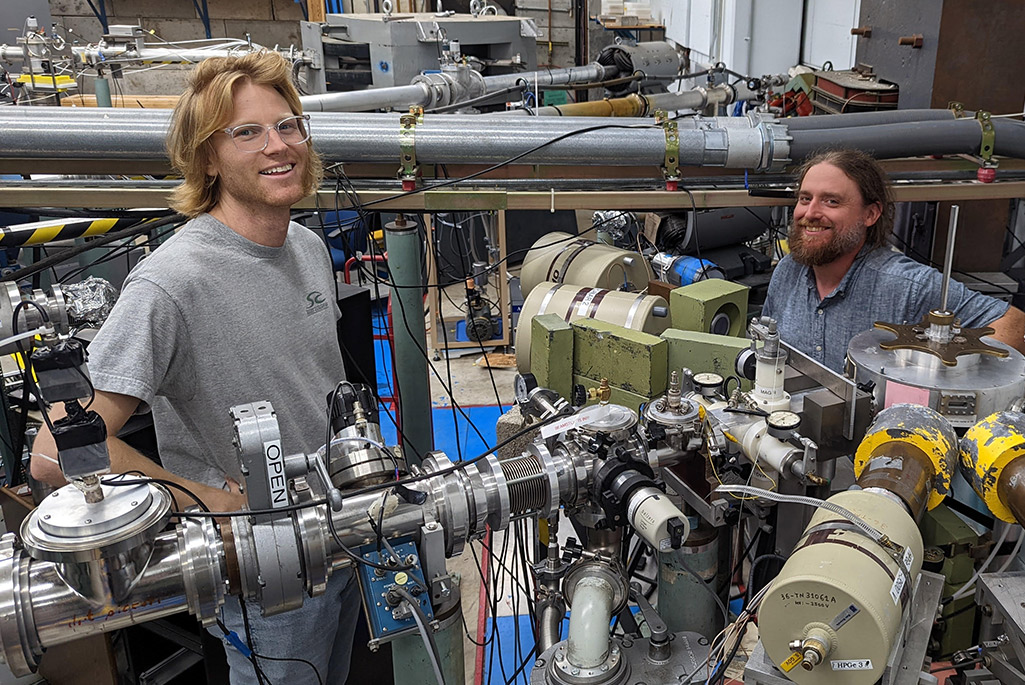Scott Haselschwardt – an Owen Chamberlain Postdoctoral Fellow in Berkeley Lab’s Physics Division – and collaborators from SLAC National Accelerator Laboratory, the University of North Carolina – Wilmington, and Duke University, have recently reported on their determination of new nuclear data for cesium-136, specifically the properties of its low-lying excited states. These data will allow researchers to reliably model the emission of gamma rays following so-called “charged-current” neutrino-nucleus interactions in large xenon detectors, such as the LUX-ZEPLIN experiment. The study of such reactions will enable new measurements of solar neutrinos and more powerful searches for certain models of dark matter.
Read More:
Discovery of Low-lying Isomeric States in Cesium-136 Has Applications in Particle Astrophysics
January 16, 2024 / Scott Haselschwardt, Brian Lenardo, Tim Daniels / DOE Office of Science
